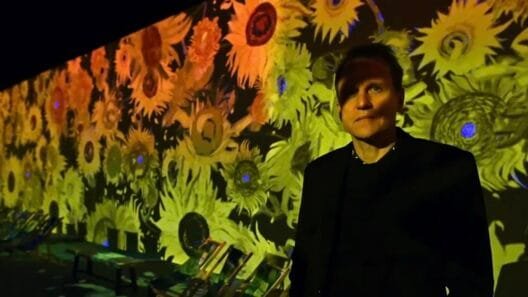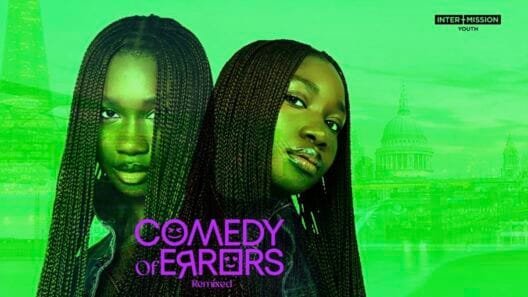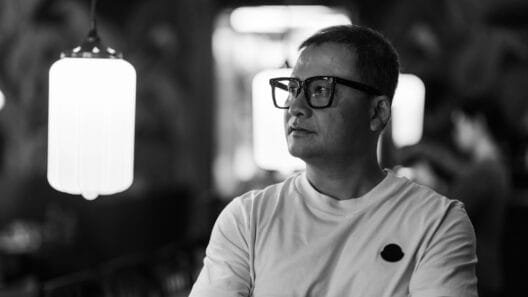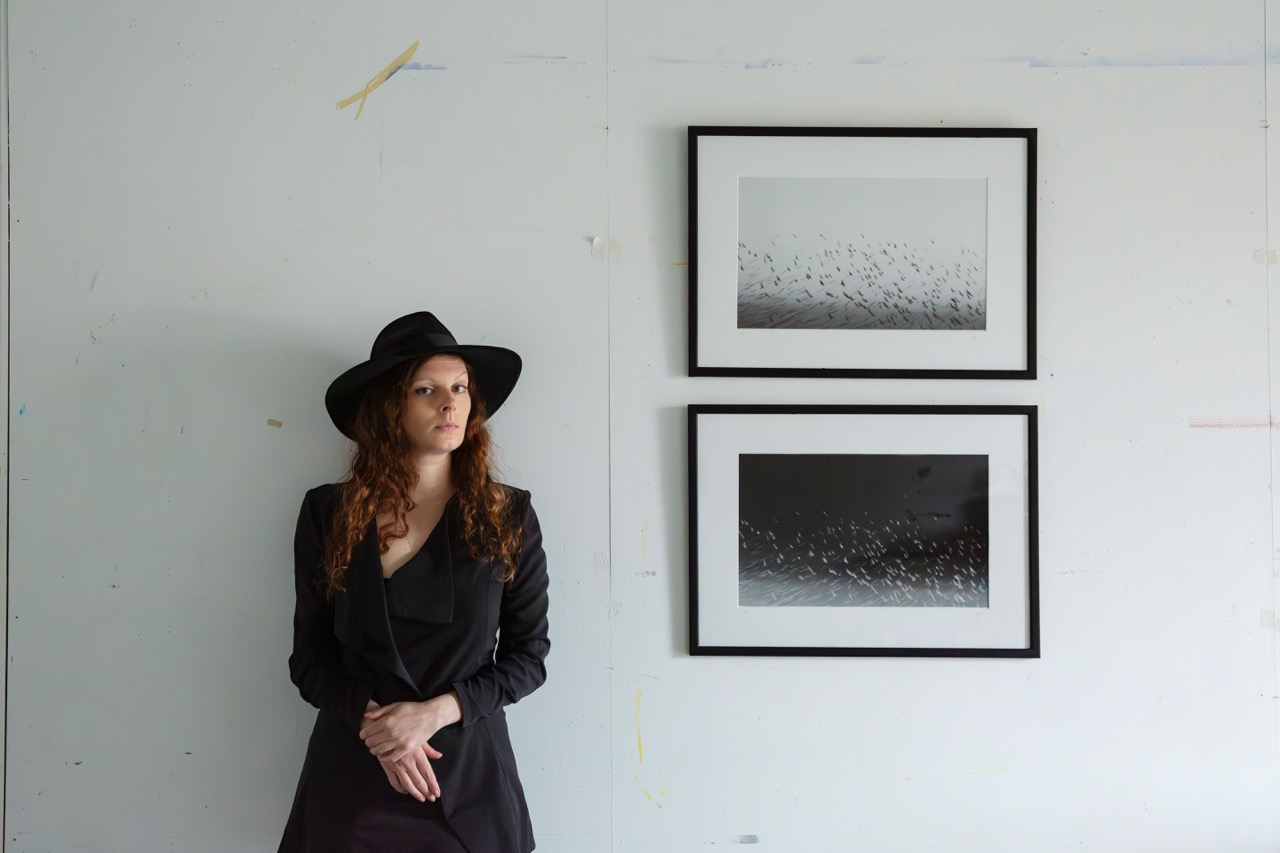Rosie Reed Gold’s new exhibition Linger invites Shoreditch locals and visitors alike to pause, reflect, and see their world through a more fluid lens. Opening 10th April at Hart Shoreditch hotel, the show explores seasonal light and the human relationship with uncertainty—offering a painterly meditation on change, motion, and stillness. As daylight stretches and the pace of life quickens, Linger is a timely reminder to slow down and rediscover wonder in the in-between moments.
You often work across disciplines—from poetry to installation to photography. How do you decide which medium best serves a particular idea?
Photography and video were the first mediums I began with, as I had developed skills with a camera through my career as a professional photographer. There was a particular project called ‘horizons’ that I developed for a site specific space in Scarborough, where it felt very important to escape the 2D, to play with the idea of movable horizons, so I printed the photographs onto fabric and made a kind of hanging, interactive work. From there, my mind was freer to move into ideas around installation.
Poetry is a format which helps me understand how I’m thinking about an idea, or sometimes it’s the culmination of an idea that refuses to be expressed any other way. Ultimately the ideas often suggest a particular format, at least as a springboard from which to begin. Perhaps each discipline used is a particular kind of tool for expression, or a different voice, or accent that serves what is trying to surface. Sometimes it takes a long time to decide which is most appropriate, other times it’s a far more instinctual process.
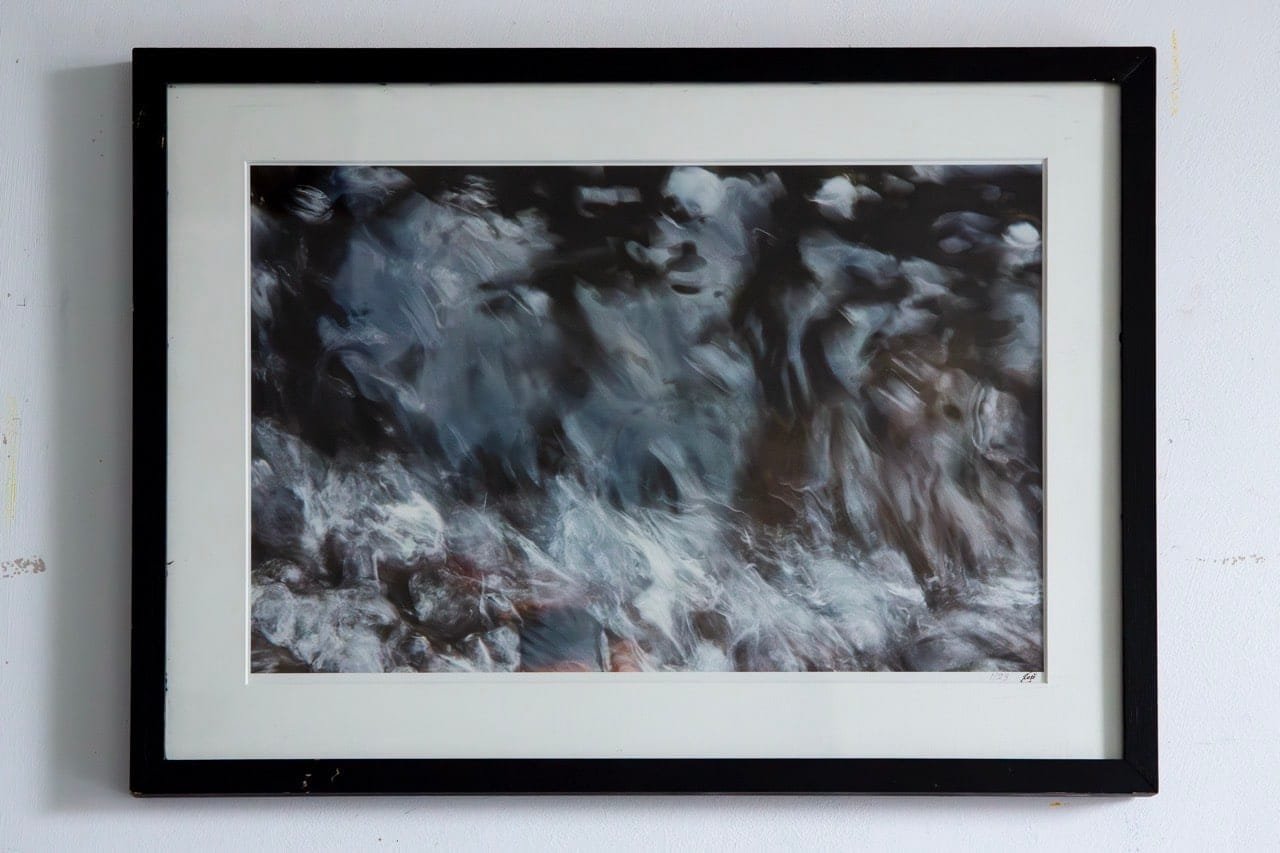
Linger captures locations like Brighton, Bristol, and Iceland. What role does place play in your creative process?
I am fascinated by the landscape of the psychological, and how the inner terrain is influenced by, and interacts with, its immediate surroundings , both social and environmental. The murmuration photographs in this exhibition were taken in Brighton, as this is a place where the starlings gather for only a few months of the year to perform their ritualistic movement at sunset. At the time, I was artist in residence at The English Folk Dance and Song Society, and had been studying old footwork drawings for social dancing in The Vaughan Williams Memorial Library when I came across a tune there called ‘A Song for the Starling’. Drawing parallels between the starling murmurations and social dancing emerged quite naturally from there.
The ‘Wood For The Trees’ photographs were taken at my Mother’s house in Bristol, in the liminal space between Christmas and New Year, when everything can seem a little foggy. I woke up one morning to find a deep blanket of snow had fallen overnight, and while out documenting this in my chid-like excitement I became fascinated with the way the sky and the ground were the same shade, somehow through my lens it was hard to tell which way was up. I pushed this idea of destabilisation and living in the uncertainty of the moment, particularly at that time of year, by manually focussing the lens extreme slowly, until just before the point of focus had been reached, then clicked the shutter.
Iceland was a dream to visit and I hope to go back before too long. A very kind friend invited me to visit her in Seydisfjordur on the east of the island as she was finishing an amazing residency there. I witnessed the Northern Lights for the first time and stood in wonder, watching light moving like flashes of water over the sky. By day, I became obsessed with the clear water there that tumbled from waterfalls, foaming and rubbing over solidified black lava and red volcanic rock. I wanted to capture the constant movement, to honour all the temporary bubbles dancing on the surface, and to be in flow with the aliveness of the rushing water.
Space/time plays a huge role in all my work, as the inner landscape can contain multiple tenses or past, present and future, so I find it interesting to explore how this is projected onto and reflected back by the material environment.
Your work often invites interaction and collaboration. Why is that relational element so important to your practice?
I think all my favourite forms of art are interactive really. Even a static painting or photograph is received differently depending on who the viewer is – the message or sign open to interpretation. Ultimately I’d like to be making work that exists by itself but also that holds the possibility of becoming a larger or different version of itself with an audience. We are social creatures, all interconnected with each other and with our environment. My hope is that sharing some of my inner world might help others to connect to theirs. I like to suggest structures, some more rigid than others, whereby an audience co-creates the work. In this way, as with any poem or novel written on the page, we can connect with each other relationally even if we’re not occupying the same space at the same time. Collaboration opens up possibilities to look at things differently, allows us to create something that you simply could not make alone, it bonds and unites us with a common purpose – and it’s fun!
East London has long been a melting pot for experimental art. How has the creative community around Shoreditch influenced or supported your work?
I’ve been coming to Shoreditch for years – I cut my teeth as a photographer here many years ago – teaching myself how to take photographs in low level light at numerous gigs, at venues like The Old Blue Last, 93 Feet East, Rich Mix and The Macbeth. Here, I learned how to to move myself and the frame around and try to anticipate the best angles, looking for atmosphere over precision as I was working with a fairly basic level DSLR at the time. Luckily my hard work paid off and I later graduated to taking photographs at LSO St Luke’s for The Barbican.
I’ve attended many brilliant exhibitions in the area at Autograph, Peer Gallery, Flowers Gallery and more recently the Gagosian presentation of works by Christo (one of my favourite artists) on Princelet Street. There is always something to find inspiration in here, from the ever updating graffiti, to the music and the mix of old and new architecture. The connection to the recently uncovered Curtain Theatre remains, where some of the earliest performances of Shakespeare’s plays happened, is also closely influencing my next collection of works.
The concept of “lingering” suggests slowness, presence, and observation. How do you personally cultivate those qualities in today’s hyper-fast world?
The title for the show is partly inspired by Mikko Harvey’s poem ‘For M’, which contains the lines
“Please linger
near the
door uncomfortably
instead of
just leaving.
Please forget
your scarf
in my
life and
come back
later for
it. “
I think we have all wished for a little more time in hindsight. The photographs in this exhibition represent a kind of attempt to inhabit a longer moment, a lingering in the environment, an extended interval of attention. Over the years I have cultivated a habit of pausing to notice light; as it splashes shadows across walls, bouncing off ripples in the canals of East London as I walk by, airplane trails chalking their way across the sky, I literally will stop to smell the roses on the street! I often document these moments in photographs or videos, as little stored meditations on presence…one day I suspect they will turn into a video work but for now I am very happy to have them as reminders of my gratitude simply for being able to stop long enough to give these things my attention.



